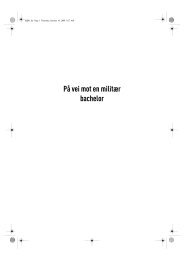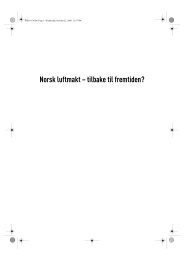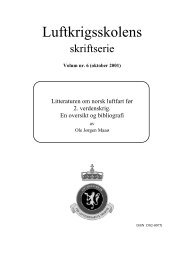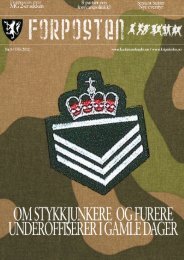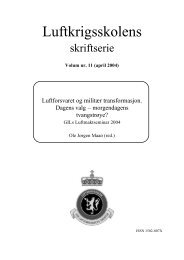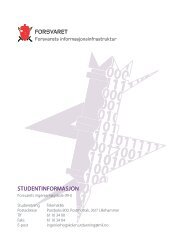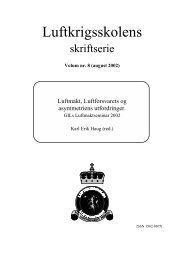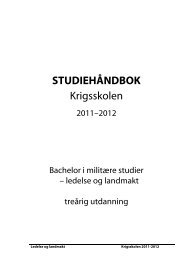Wilhelm Mohr
Wilhelm Mohr
Wilhelm Mohr
Create successful ePaper yourself
Turn your PDF publications into a flip-book with our unique Google optimized e-Paper software.
<strong>Wilhelm</strong> <strong>Mohr</strong>. On World War II<br />
were to go through organizational and structural changes. Mobility<br />
and flexibility were the keywords. A tactical Wing HQ was established<br />
at the same time as the Squadrons were made smaller and streamlined<br />
for full mobility through air lines of communications. Ground<br />
personnel were separated and technical maintenance was centralized<br />
under the Wing, even though some elements were kept by the original<br />
Squadrons. Even so, the technical section was to continue to support<br />
any flying operation where circumstances required the use of the airfield.<br />
The Norwegian personnel of various professions and disciplines<br />
numbered approximately 500 at this point in time. Yet one more British<br />
fighter squadron, No. 66, was attached to the Wing. A ground element<br />
for this squadron was built up mainly of Norwegian personnel, and<br />
this was to be a part of the Wing’s centralized maintenance system. In<br />
addition, the British provided two special mobile communication units<br />
to maintain lines of communication within the Allied system, provide<br />
cipher services, and so forth. In the same manner, the British Air Force<br />
provided two squadrons for the low defence [Base Defence] of the airfield.<br />
The whole Wing was to be made mobile. All workshops, control<br />
units, kitchens, mess halls, field hospitals, etc., had to be able to be<br />
moved by trucks or special vehicles, of which petrol-, fire- and crane<br />
trucks used to remove wreckage from the runway were among the heaviest.<br />
A huge programme to teach the personnel to drive and operate<br />
in convoys was established. The various types of cars were far from the<br />
easiest to handle. After a while, the Wing received 350 cars.<br />
Quartering was to be in tents. A minimum of field equipment, such<br />
as simple woollen blankets, was distributed to each person. Attention<br />
was focused on how to operate under the field conditions, setting<br />
up camp, hygiene arrangements, physical adjustment, and also discipline,<br />
such as shooting exercises, the handling of mines, camouflage<br />
routines, training in self-defence, and fieldwork, in order to improve<br />
one’s own level of protection. Hazardous working conditions would<br />
have been an inevitable result of a flight line under these circumstances.<br />
82



